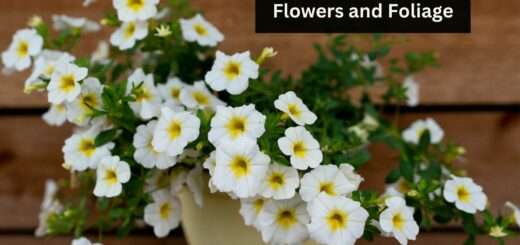Lupines Flower: Lupines Growing Guide and When Do Lupines Bloom
What is your opinion on adding or giving a garden the look of a classic cottage garden? I know it sounds interesting, but believe me, once you start growing them in your garden, you will be astonished by the results.
Yes, growing lupine flowers will change your garden’s look completely. Don’t worry; I am here to help you. Before starting to grow lupine flowers, you need to know how to grow and care for them. This article is going to clear all your confusion, and if you have any further doubts, ask me in the comment section.
Lupines Flower:
The lupines belong to the Lupinus members that are from the Fabaceae family. You find about 199 species in this genus. They are also known as lupin plants and bluebonnets in some areas.
To grow the lupine flowers you will find stalks of colorful blossoms. The lupine flowers do exist for both perennial and annual varieties but you easily find perennial varieties from nursery plants. If you are planting the lupine flowers by seeding. you need to pay more attention to them. The lupine plants also produce beans but those beans are not famous in every location such as the US and are found in Europe, the Middle East, and North Africa.

Note:
In order if you have a peanut allergy then you should avoid consuming lupini beans. If you are allergic to peanuts then you are allergic to lupin beans too.
Let’s learn how to care for them:
Lupines care:
The following are some basic needs that you need to provide the plant:
Planting:
- If you are growing the lupin’s flower by seeding them then you need a dig hole of about 1 to 1.5 ft Deep.
- In the case of growing smaller plants, you need to grow them about one foot apart.
- For growing a larger plant you need to maintain a distance of about 2 to 3 feet.
- These plants are planted outdoors during the cooler temperatures that is either spring or fall.
- You should add mulching but keep them away from over-fertilization.
Light:
- The flower prefers to grow in full Sun.
- Providing them at least 6 hours of sunlight a day will be good for them.
- The Lupines flowers love to grow in partial shade but in extreme conditions, their flowers will start diminishing. So in the hot climate, the afternoon shade is perfect for them.

Soil:
- The Luminous flower does crow quickly in organically rich soil that has sharp drainage.
- The soil pH ranges from neutral to slightly acidic.
- They are also able to grow in very acidic soil conditions which you can check using pH meters..
Water:
- In case of watering the plant, you need to avoid the soggy soil condition which will cause root rot.
- The plant prefers regular watering.
- You need to prevent the soil from drying out so water at least weekly and avoid watering if there is rainfall.
Temperature and Humidity:
- You need to maintain the temperature and humidity to grow the plant beautifully.
- The Lupin flower does like the climate of a cool summer. They will not grow best in hot humid climates, for example in the southern part of the United States.
- The plant will not be able to bloom flowers in high heat and strong sunlight.
- In case of a hot climate, you should provide the plant with a light layer of mulch that will help the lupines retain the soil moisture and keep the roots cool.
Fertilizer:
- In the case of fertilizing the plant, the lupines do not require to be fertilized.
- You can provide them with an acidifying fertilizer because they do have more Phosphorus, the nitrogen that will be useful for the soil to maintain the pH.
- The fertilizer that has more Phosphorus than nitrogen is called Bloom boosters.
- Lupine plants is able to fix the nitrogen in the soil by themselves so that is why they don’t require more nitrogen by fertilizing them

When Do Lupines Bloom?:
The lupine flower loves to bloom from late spring into July. They also used rebloom with smaller flowers after their first bloom.
How to Plant and Grow Lupines?
The lupine flower belongs to herbaceous perennial plants that you can grow from seeds, cutting, or divisions. After blooming the foliage of lupines dies and the new growth starts from roots in the spring season. So if you provide the plant with the right amount of light it can be grown indoors in some containers.

So let’s learn how to grow lupines:
Site Preparation:
- Lupine flowers grow best in cool moist locations so providing the plant with full Sun to light shade will help them to grow quicker.
- The soil where you are planting the flower should tolerate Sandy, dry soil. You need to lotion up the soil up to a depth of 12 to 20 inches with the help of a rototeller or Garden folk as the plant is used to grow in long tap roots.
- Make sure not to plant them in clay soil.
Grow Lupines from Seed:
- In order to grow the lupines flower from seed the germination of the seed will take 7 days of cold treatment.
- You need to place them in a ziplock bag by slightly damping them in a paper towel and keep the bag in the refrigerator.
- You can also keep the seed soaked in warm water for at least 24 hours after that you can directly show the seed into a seed bed during the spring or summer season.
- You need to show the seed at a depth of about 1.5 inches by losing up the topsoil and keeping the distance about 12 inches.
- You need to keep the seeds moist until they start germinating.
- After 12 to 25 days the Seedling will start emerging.
- The plant you are growing by seeding them will start blooming in the first year.
- In order to prolong the blooming period you can Pinch Of The spent flower.
- To keep the plant healthy and beautiful you can apply an organic fertilizer.
Propagating Lupines:
- If you want to grow the lupin’s flower using the cutting then you need to take a step down to the trunk.
- Plant cutting into moist, well-drained, and gritty sand.
- You need to cover the plant in the propagation period but in between you can provide them here and allow the plant to adjust them according to their growth.
- Always plant the cutting into a larger pot so that you can easily transplant them outdoors without disturbing the roots of the flower.
- Make sure not to start transplanting the lupines flower as the tap roots of the plant are very delicate and if they get damaged the planting will not be successful.
Types of Lupines flower:
The following are various types of lupine that have different appearance:
Russell mixed colors
They are hybrid rainbows having bicolor mixtures that were bred in 1938 and can be grown in many areas.
Gallery series:
Gallery series does have dense flower spikes that don’t grow more than 2 feet tall.
‘Dwarf Lulu’:
Dwarf lulu are used to grow up to 2 feet tall as a rainbow of hue in a dense way.
Minarette:
Minarette is a flower that grows up to 18 inches and has stunning looks and you can grow them along broader edges Or in containers.

Conclusion:
If you read the conclusion I hope you got to understand all about lupines how to care for them, lupine blooming, how to grow, and what are the types of lupines.
FAQ’s
What if you don’t deadhead the lupines?
You need to trim off the deadhead to stop the plant from self-heading and the deadheading will prolong the display.


